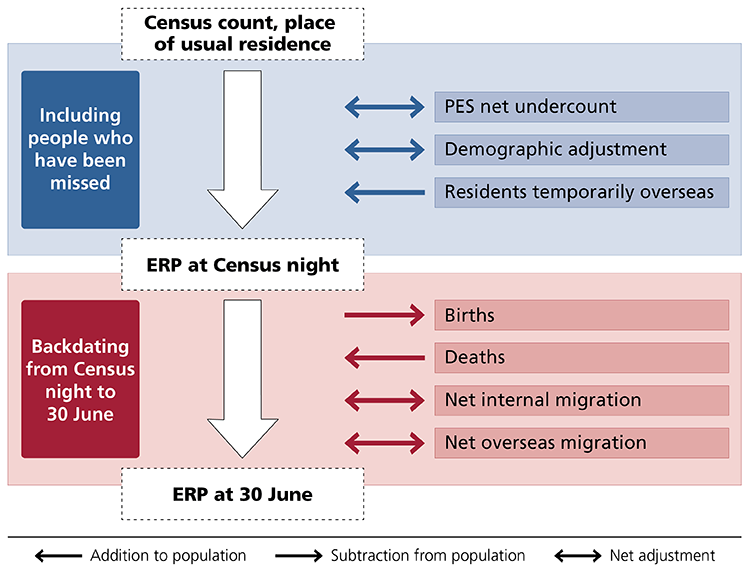Introduction
Estimates of the Aboriginal and Torres Strait Islander population are produced following each Census (every five years).
- Preliminary estimates are released in the year following the Census.
- Final estimates are released two years following the Census.
Estimates and Projections, Aboriginal and Torres Strait Islander Australians, 2011 to 2031 provide estimates and projections of the Aboriginal and Torres Strait Islander population for years in between Censuses and are derived using assumptions about future fertility, paternity, life expectancy and migration.
Scope
Australia's estimated resident population (ERP) includes all people who usually live in Australia (regardless of nationality, citizenship or legal status), with the exception of foreign diplomatic personnel and their families.
Geographic coverage
These data cover Australia and its states and territories, Remoteness Areas and Indigenous Regions, as defined by the Australian Statistical Geography Standard (ASGS) Edition 3.
The category, ‘Other Territories’ is included in the Australia total, and includes Christmas Island, the Cocos (Keeling) Islands, Jervis Bay Territory and Norfolk Island.
Sources
Estimates of the Aboriginal and Torres Strait islander population are based on the Census, Post Enumeration Survey (PES) and other demographic information. Further information on each component can be found in the Technical note – Methodology used in Aboriginal and Torres Strait Islander population estimates.
